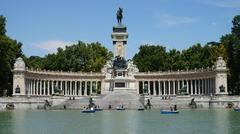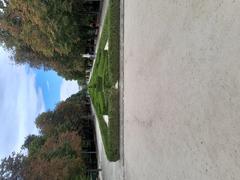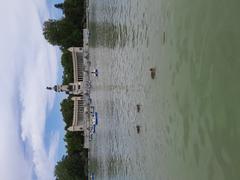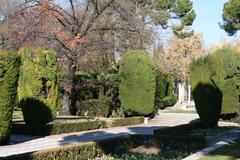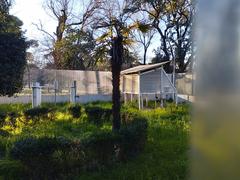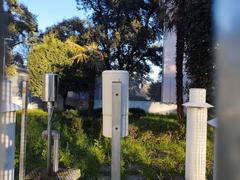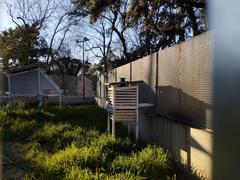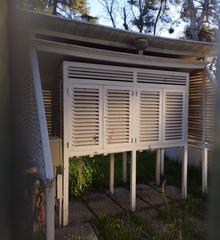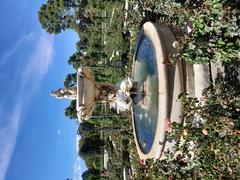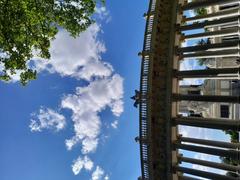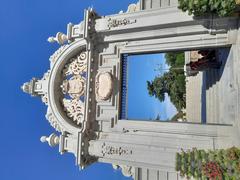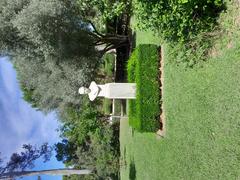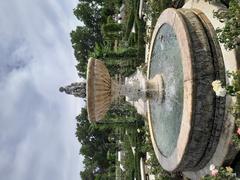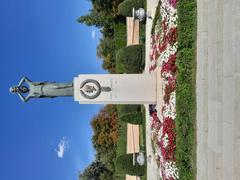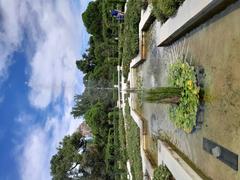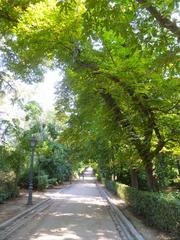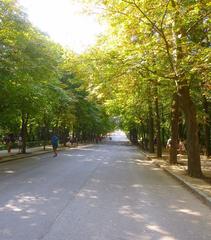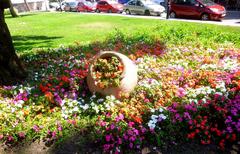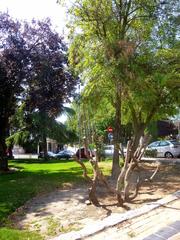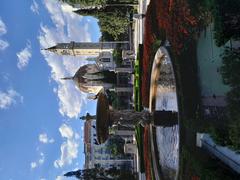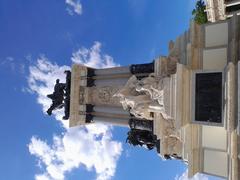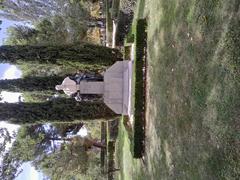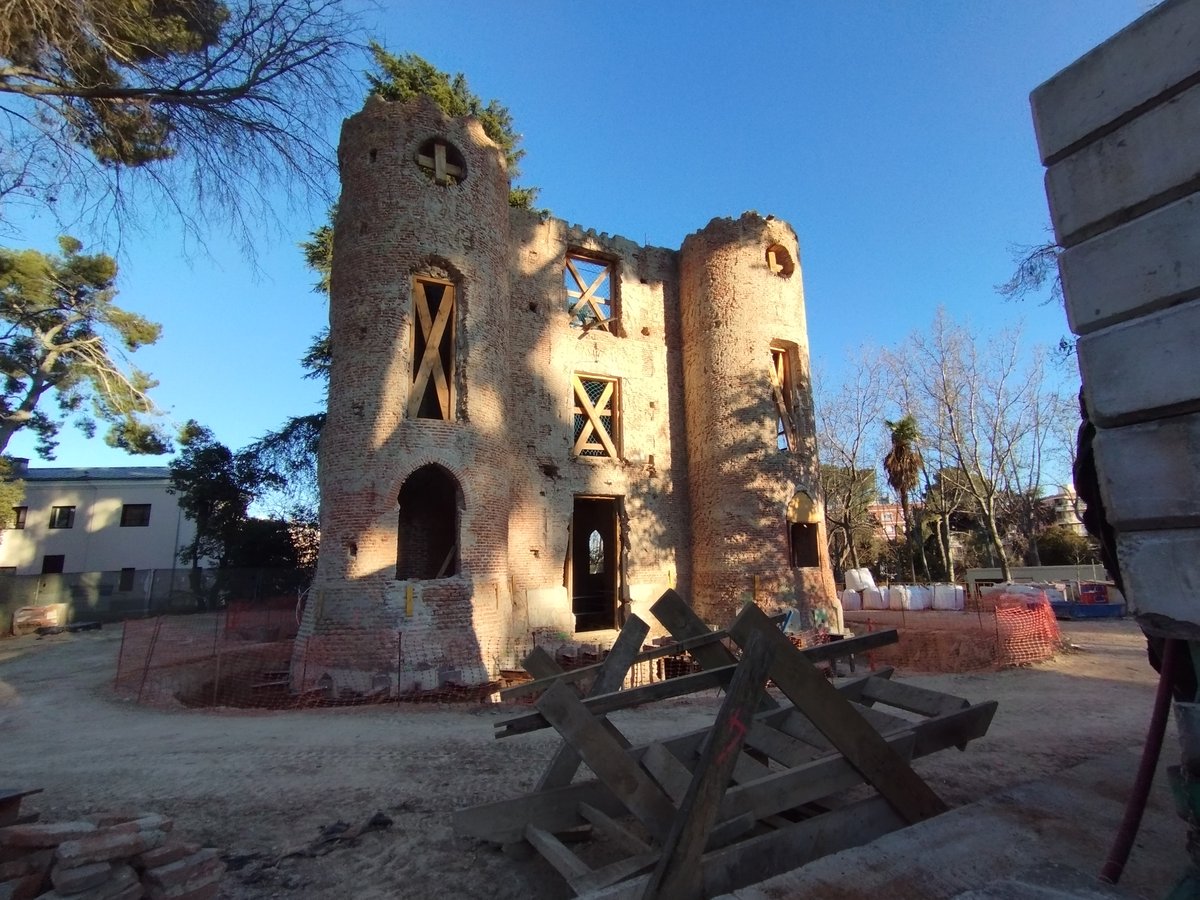
El Retiro Park Madrid: Visiting Hours, Tickets, and Historical Sites Guide
Date: 14/06/2025
Introduction: History and Cultural Significance
El Retiro Park, officially known as Parque del Buen Retiro, is one of Madrid’s most cherished landmarks, blending centuries of royal history, rich artistic heritage, and everyday public life into a lush urban oasis. Commissioned in 1632 by King Philip IV as a private royal retreat for leisure and courtly entertainment, El Retiro has undergone remarkable transformations—including neoclassical redesigns, wartime upheavals, and its eventual opening to the public. Today, it spans approximately 125 hectares and stands as a vibrant cultural and recreational hub, home to iconic sites such as the Palacio de Cristal and the Estanque Grande del Retiro (The Culture Map; Britannica; esmadrid.com).
El Retiro’s transition from an exclusive royal domain to a democratic, public park mirrors broader European social changes and solidifies its role as Madrid’s “green heart.” With its diverse gardens, monuments, and annual events like the Madrid Book Fair, the park is not only a haven for relaxation but also a stage for cultural exchange and community engagement (discoverwalks.com; fringemadrid.com). Its accessibility, free admission, and central location make El Retiro a quintessential Madrid experience and an integral part of the city’s UNESCO-listed “Landscape of Light” (UNESCO; Spain.info).
Table of Contents
- Introduction
- Royal Origins and Early Development
- 18th-Century Transformation
- 19th-Century Changes and Public Opening
- Artistic and Cultural Highlights
- Modern Urban Oasis and Recreational Areas
- Festivals, Events, and Community Life
- Accessibility, Tickets, and Visiting Hours
- Practical Tips for Visitors
- Frequently Asked Questions (FAQs)
- Main Attractions
- Facilities and Amenities
- Location, Access, and Getting Around
- Seasonal Highlights
- Nearby Attractions
- Summary and Final Recommendations
- References
Royal Origins and Early Development
El Retiro Park began as a royal project in the early 17th century, when King Philip IV commissioned the grand Palacio del Buen Retiro and its surrounding gardens in 1632. Designed as a private retreat for the monarchy, the park’s original landscape included formal gardens, wooded areas, ornamental fountains, and artificial lakes for elaborate courtly spectacles (The Culture Map). The design reflected Italian and French influences, with geometric layouts and manicured plantings serving as a testament to royal sophistication.
18th-Century Transformation
Under the reign of Charles III in the 18th century, El Retiro underwent a significant neoclassical redesign. This period brought elegant pavilions, ornate fountains, and new monuments, while the park’s layout was enhanced with both French formal and English landscape elements. Notably, the Estanque Grande del Retiro—the park’s main pond—became a centerpiece for royal boating and public enjoyment (The Culture Map).
19th-Century Changes and Public Opening
In the 19th century, the park experienced upheaval due to the Napoleonic invasion, which led to the partial destruction of the palace. After the Peninsular War, the park shifted from royal property to a public space, officially opening to the citizens of Madrid. This democratization reflected social changes in Spain and turned El Retiro into a focal point for civic life and cultural events, enriched by new gardens and landscape styles (The Culture Map).
Artistic and Cultural Highlights
Palacio de Cristal (Crystal Palace)
Inspired by London’s Crystal Palace, the Palacio de Cristal was built in 1887 as a glass pavilion for the Philippine Exposition. Today, it hosts contemporary art exhibitions organized by the Reina Sofía Museum, creating a striking blend of historic architecture and modern art (esmadrid.com; hollymelody.com).
Monuments and Sculptures
El Retiro is an open-air museum, featuring over 30 statues and monuments. Highlights include:
- Monument to Alfonso XII: A grand colonnade overlooking the main pond.
- The Fallen Angel Statue: A unique 19th-century sculpture inspired by Milton’s “Paradise Lost,” and one of the few public monuments to Lucifer (xixerone.com).
- Rosaleda (Rose Garden): Designed in 1915, it hosts over 4,000 rose bushes and annual rose competitions.
Literary and Scientific Sites
The park houses the Eugenio Trías Public Library in the former zoo building, serving as a hub for literary events and education. The nearby Royal Observatory, though not open to the public, highlights El Retiro’s scientific heritage (esmadrid.com; hollymelody.com).
Modern Urban Oasis and Recreational Areas
Today, El Retiro is a multifaceted park offering formal gardens, shaded promenades, tranquil ponds, and open lawns. Locals and visitors flock here for jogging, cycling, boating, picnicking, and socializing, making it an enduring social and cultural nexus (The Culture Map).
Festivals, Events, and Community Life
El Retiro is the site of major annual events, such as:
- Madrid Book Fair: Transforming the park’s avenues into a bustling literary market (explorial.com).
- San Isidro Festival: Featuring concerts and traditional celebrations.
- Art Exhibitions: Hosted in the Crystal Palace, Palacio de Velázquez, and open-air spaces (fringemadrid.com).
Street performers, outdoor markets, and community gatherings further enhance the park’s vibrant atmosphere (fringemadrid.com).
Accessibility, Tickets, and Visiting Hours
- Hours: Open daily, typically from 6:00 AM to 10:00 PM (October–March) and until midnight (April–September). Hours may vary for events or exhibitions (esmadrid.com).
- Admission: Free for general entry; some exhibitions in Palacio de Cristal or Palacio de Velázquez may require tickets or donations.
- Accessibility: Most main avenues are wheelchair accessible, with ramps, accessible restrooms, and multiple access points. Guided tours for visitors with disabilities can be arranged through official channels.
Practical Tips for Visitors
- Plan ahead: Consult official event calendars for exhibitions and performances (esmadrid.com).
- Explore hidden gems: Seek out spots like the French Parterre, Cat Mountain, and Jardines de Cecilio Rodríguez for a more intimate experience.
- Engage with local culture: Enjoy puppet shows, rent a rowboat, or join a festival.
- Stay safe: Be mindful of your belongings in crowded areas, and use designated paths for cycling or skating.
Frequently Asked Questions (FAQs)
What are El Retiro Park’s opening hours?
Open daily, generally from 6:00 AM to 10:00 PM (winter) and until midnight (summer).
Is there an entrance fee?
No, entry is free. Some exhibitions may require tickets.
Are pets allowed?
Yes, dogs are permitted but must be leashed except in designated areas.
How do I get there?
Easily accessible by metro (Retiro, Ibiza, Estación del Arte stations) and bus.
Is the park wheelchair accessible?
Yes, main paths and restrooms are accessible.
Can I rent boats or bicycles?
Yes, rowboats and bike/scooter rentals are available.
Main Attractions
- Estanque Grande del Retiro: Rent a rowboat or enjoy street performances by the lakeside (Citylife Madrid).
- Palacio de Cristal: Contemporary art in a luminous glass setting.
- Palacio de Velázquez: Free art exhibitions in a 19th-century hall.
- Paseo de la Argentina (Statue Walk): Grand avenue lined with statues of Spanish monarchs.
- La Rosaleda: A vibrant rose garden, stunning in late spring and early summer.
- Jardines de Cecilio Rodríguez: Secluded gardens with free-roaming peacocks.
- Fallen Angel Statue: Unique sculpture inspired by “Paradise Lost” (Must See Spain).
- Parterre Francés: Formal French garden featuring Madrid’s oldest tree.
Facilities and Amenities
- Restrooms: Available near major attractions.
- Cafés and Kiosks: Serve refreshments throughout the park.
- Playgrounds: Family-friendly areas for children.
- Sports Facilities: Courts for tennis, paddle, and soccer, plus jogging and cycling paths (Citylife Madrid).
- Picnic Areas: Shaded lawns and benches ideal for outdoor meals.
Location, Access, and Getting Around
- Location: Central Madrid, main entrance at Plaza de la Independencia, adjacent to Puerta de Alcalá (Trip.com).
- Metro Stations: Retiro (Line 2), Ibiza (Line 9), Estación del Arte (Line 1).
- Bicycle/Scooter Rentals: Available at several park entrances (Krista the Explorer).
- Wheelchair Access: Major avenues are flat and paved.
Seasonal Highlights
- Spring/Early Summer: Rose garden in full bloom; Book Fair and cultural events (Madrid Traveller).
- Autumn: Tree-lined avenues transform with vibrant foliage.
- Winter: Quieter ambiance, with peaceful walks and fewer visitors.
Nearby Attractions
El Retiro is within walking distance of top Madrid sites, including the Prado Museum, Reina Sofía Museum, Thyssen-Bornemisza Museum, and Puerta de Alcalá (Trip.com).
Summary and Final Recommendations
El Retiro Park is a living emblem of Madrid’s historical legacy, artistic energy, and communal spirit. Its transition from royal retreat to public park encapsulates the city’s evolution, while its UNESCO World Heritage status underscores its universal value (UNESCO). From iconic monuments and lush gardens to lively festivals and recreational spaces, El Retiro offers something for every visitor. Explore with the help of guided tours or mobile apps like Audiala, and immerse yourself in the green heart of Madrid.
References
- The Culture Map: El Retiro Park Madrid Guide
- Britannica: Retiro Park
- Esmadrid.com: El Retiro Park Tourist Information
- Spain.info: Buen Retiro Park
- UNESCO World Heritage Centre – Paseo del Prado and Buen Retiro
- Citylife Madrid: Retiro Park Guide
- Must See Spain: Madrid Travel 2025
- Madrid Traveller: Things to Do in Madrid in June
- Trip.com: El Retiro Park
- Krista the Explorer: What to See in Retiro Park
- explorial.com: Madrid Parque del Retiro
- fringemadrid.com: Retiro Park
- hollymelody.com: Retiro Park Guide
- xixerone.com: El Retiro Park Top Attractions
- discoverwalks.com: Amazing Facts About El Retiro Park
- Wikipedia: Parque del Buen Retiro, Madrid
- TravelAwaits: Things to Do in Retiro Park
Plan your visit today! Download the Audiala app for immersive guided tours, insider tips, and up-to-date event notifications. Follow us on social media for more Madrid travel inspiration.

